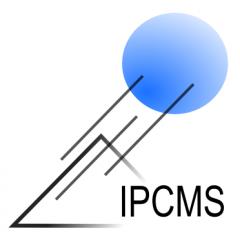Title : Light-induced processes in materials : insights from ab initio methods
- Light tunable gas adsorption in functionalized metal-organic frameworks: insights from ab initio methods Metal-organic frameworks (MOFs) functionalized with azobenzene, a photo-isomerizing molecule, are capable of light stimulated capture and release of CO2. Using ab initio density functional theory (DFT) based atomistic modelling, the microscopic mechanism behind the light tunable gas uptake in azobenzene functionalized MOF-5 is revealed to be the blocking and unblocking of the metal-node, by distinct geometric configurations of azobenzene. A practical environment-consistent Bethe-Salpeter equation (BSE) approach is used for an accurate description of the photo-excitations of the photo switches to propose strategies for achieving high yields of photo switching. Our study also shows that electronic excitations in the prototype MOF-5 give rise to strongly bound states of electron-hole pair, analogous to organic insulators.
- Modulation of magnetization in BiFeO3 using circularly polarized light Dynamic and efficient control of the characteristic spin texture of multiferroic BiFeO3 is attractive for emerging quantum devices. Crystal-field d → d excitations localized on Fe atomic sites in BiFeO3 induce a complex interplay among the spin, charge and lattice degrees of freedom, making them relevant for manipulation of the spin texture. Ab initio methods based on the GW approximation and the BSE are used to characterize localized spin-flip excitations within Fe-3d shell. These excitations are strongly bound and appear deep within the electronic gap. Their spin-content and strong localization are protected by the antiferromagnetic ordering. The underlying crystal symmetry gives rise to chiral spin-flip exciton states localized on distinct Fe centers. These chiral excitons couple selectively to light of a particular circular polarization and are confined to a particular Fe magnetic sub-lattice. As a consequence, net spin- magnetization can be achieved using circularly polarized light coupling with exciton of desired chirality, thereby modulating the antiferromagnetic texture and giving rise to transient ferrimagnetism.
- Future directions: Understanding charge-lattice-spin coupling using ab initio methods
In transition-metal oxides, localized excitons can give rise to a complex interplay of spin-charge-lattice degrees of freedom. I intend to motivate and sketch an investigation of the coupling of these excitons with lattice motion and its relevance for optomechanical control.
Contact : Mébarek ALOUANI : mebarek.alouani@ipcms.unistra.fr
Upcoming Events
Back to Calendar08 July 2025
Quantum sciences and materials seminar presented by Patrick Potts
Title : Active quantum reservoir engineering - Using a qubit to manipulate its environment
10 July 2025
ADDEPT : 12th "pétanque" tournament
It will be followed by the barbecue
